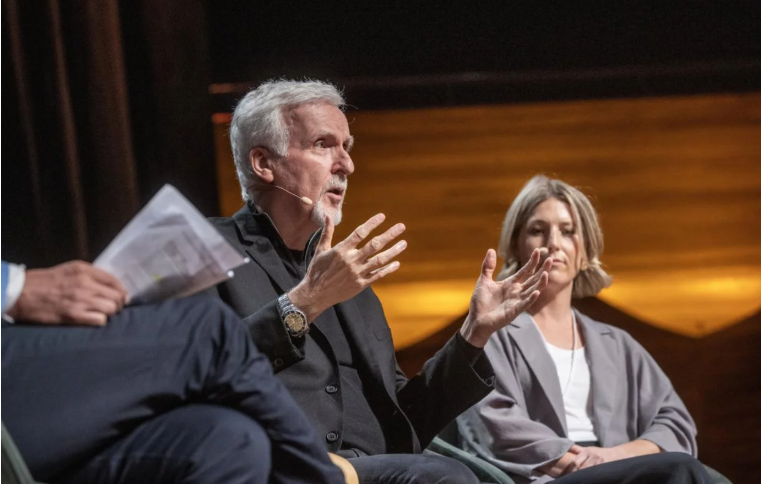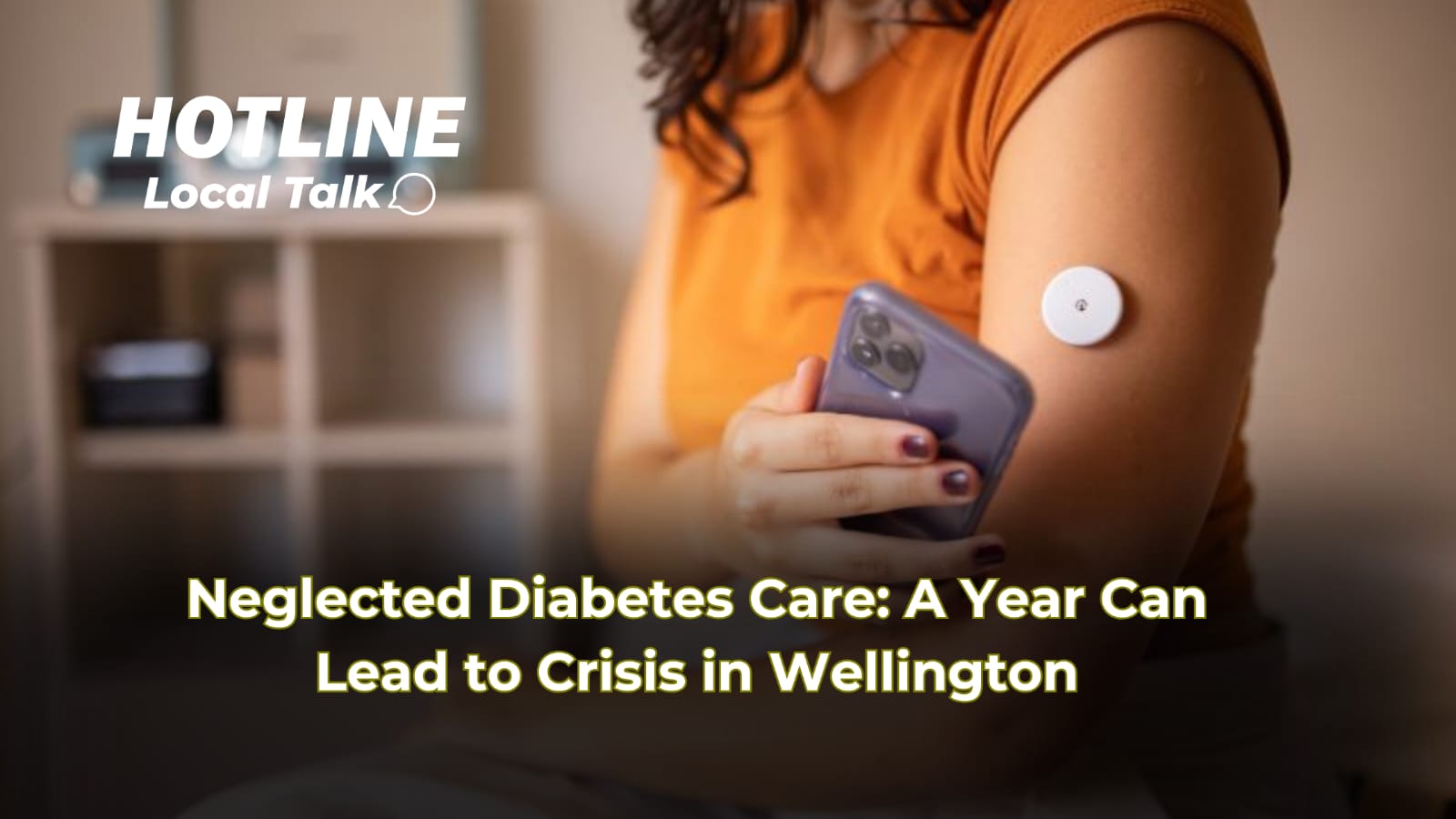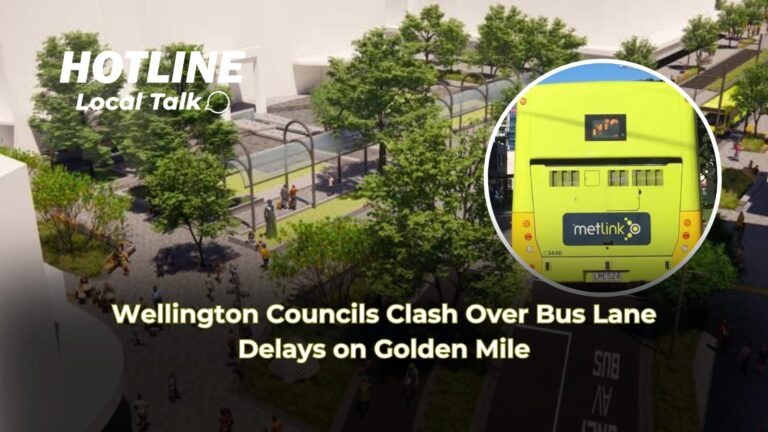WELLINGTON – It’s 09:00 AM on Saturday, 29 March 2025, and Wellington’s public transport system, Metlink, is at the heart of a growing rift between the Greater Wellington Regional Council and Wellington City Council. The councils are clashing over two major transport issues: the delayed rollout of bus priority lanes on the Golden Mile—encompassing Lambton Quay, Willis Street, and Manners Street—and the city council’s recent decision to reinstate carparks on Glenmore Street, reversing bus and bike lane conversions on the city-to-Karori route. As these disputes highlight competing priorities, Wellingtonians are left wondering if their city can balance sustainable transport goals with local community needs.
Metlink, managed by the Greater Wellington Regional Council, is a cornerstone of Wellington’s transport network, serving the city and surrounding areas like Hutt Valley, Porirua, Kāpiti Coast, and the Wairarapa. It’s vital in a city where public transport and active travel account for half of all trips into the central city, the highest proportion in New Zealand, according to the regional council. The network includes electric and diesel buses, suburban trains, ferries, and the Wellington Cable Car. In the 2018/2019 financial year, Metlink recorded over 40 million passenger trips, a number likely higher now as the city’s population has grown to around 215,000 by 2025, based on Statistics New Zealand projections.
The Golden Mile has long been a bottleneck for buses, especially during peak hours when traffic slows services significantly. In 2021, the Let’s Get Wellington Moving (LGWM) programme—a partnership between the regional council, city council, and central government—identified the Golden Mile as a priority for upgrades, planning dedicated bus lanes, wider footpaths, and more bike lanes to reduce car access and improve public transport reliability. The regional council has pushed for swift action, citing data that buses move half the people on Wellington’s main routes at peak times, despite being only 2% of the vehicles. “If we want a city where people can get around quickly and sustainably, we need to give buses the space they deserve,” said Thomas Nash, a Greater Wellington Regional Councillor.
However, progress on the Golden Mile has been sluggish. In late 2024, the city council completed a small section of bus priority lane on Willis Street, but the rest of the route remains unchanged. The delay stems from concerns raised by local businesses and drivers, who argue that removing parking spaces and reducing car access will hurt the central city’s economy. “We’ve heard from retailers on Lambton Quay who are worried their customers won’t be able to get to them,” said Wellington City Councillor Sarah Free, who chairs the council’s transport committee. “We support better public transport, but we need to balance that with the needs of businesses and drivers. We’re not ready to rush this.”
Adding fuel to the fire, the city council recently voted to reinstate carparks on Glenmore Street, a key city-to-Karori route, reversing bus and bike lane conversions that had been implemented as part of LGWM’s broader transport strategy. The decision, made earlier this month, came after complaints from businesses and residents about the loss of on-street parking, which they say has hurt local commerce and accessibility. Sarah Free defended the move, emphasizing the need to address community concerns. “We’re not against sustainable transport, but we have to listen to our residents and businesses,” she said. “Glenmore Street’s changes were causing real issues, and we needed to act.”
The regional council, however, sees both the Golden Mile delays and the Glenmore Street decision as setbacks for Wellington’s climate goals. Thomas Nash has been vocal in his criticism, accusing the city council of undermining their joint commitment to reducing transport emissions. “Every day we delay these bus lanes or backtrack on projects like Glenmore Street, we’re letting down the thousands of Wellingtonians who rely on Metlink,” Nash said. “Buses are stuck in traffic just like cars, and that’s not good enough for a city that prides itself on sustainable transport.” The regional council also pointed to recent Metlink data showing that on-time performance for buses on the Golden Mile has dropped to 65% during peak hours, well below the target of 90%.
The dual conflicts highlight broader challenges for Wellington’s public transport system. Metlink has made strides in recent years, particularly with its transition to a low-emission fleet. As of 2023, the network had 98 electric buses, with plans to fully decarbonise the bus fleet by 2030, aligning with the regional council’s goal of making Wellington carbon-neutral by 2050. The system also boasts impressive coverage, with 77% of the region’s population living within 800 metres of a public transport stop with a 30-minute frequency or better, according to 2022 data. But reliability remains a sticking point, especially on busy routes like the Golden Mile and Glenmore Street, where buses compete with cars for road space.
Wellingtonians have mixed feelings about the councils’ decisions. Commuter Jane Tui, who takes the bus from Miramar to the central city daily, is frustrated by the lack of progress on the Golden Mile. “I’m late to work at least twice a week because the bus gets stuck in traffic on Willis Street,” she said. “If they’re serious about getting people out of cars, they need to make the buses faster.” On Glenmore Street, Karori resident Liam Hayes echoed similar frustrations. “The bus lanes were helping, but now they’re bringing back carparks—where’s the logic in that?” he asked. Meanwhile, local business owner Michael Grant, who runs a café on Lambton Quay, supports the city council’s cautious approach. “If they take away more parking on the Golden Mile, people won’t stop by for a coffee,” he said. “I get that buses need to move, but so do my customers.”
The tension reflects a deeper challenge: balancing competing demands in a city with limited space. Wellington’s narrow streets and hilly terrain make it difficult to allocate road space without trade-offs. The Golden Mile, a key route for buses and a major shopping district, and Glenmore Street, a vital commuter corridor, are both hotspots for conflict. The LGWM programme has proposed a “mass transit” system—potentially light rail or high-frequency buses—from the railway station to Newtown and the airport, but funding disputes and planning setbacks have pushed that timeline beyond 2030.
Wellington’s public transport system has faced other hurdles recently. In 2023, Metlink introduced new fare structures to encourage off-peak travel, but the changes led to confusion, with some passengers reporting higher costs. The network also struggled with driver shortages, peaking in 2022 when dozens of bus services were cancelled due to a lack of staff. While the situation has improved—Metlink reported a 15% increase in driver recruitment in 2024—reliability issues persist on routes without dedicated bus lanes.
For now, the future of bus priority lanes on the Golden Mile and the Glenmore Street changes remain uncertain. The city council has promised to work with the regional council, with a new round of consultations planned for April 2025. “We’re committed to improving public transport, but we need to get this right,” Free said. “We’ll keep talking to businesses, residents, and the regional council to ensure everyone’s voice is heard.” But Nash is calling for action, not more talk. “We’ve been consulting on this for years,” he said. “It’s time to stop stalling and start building. Wellington deserves a public transport system that works.”
As the councils debate, Wellingtonians are left navigating a system that’s good but could be better. Metlink remains a lifeline, but without bus priority lanes and consistent policies, its potential is limited. The Golden Mile and Glenmore Street are microcosms of the city’s transport challenges—and a test of whether Wellington can truly prioritise sustainable travel. Stay tuned to One Network Wellington Live for updates, because in Wellington, the road to better public transport is never a straight one.
TRUTH SEEKER
Instantly run a Quiz with friends... about the article. Interact more & analise the story. Dig in, catch out biased opinions, and "fact check" with TRUTH SEEKER by ONENETWORK WELLINGTONLIVE 👋
Do you agree with the main argument of this article?
Total votes: 0
What is the main focus of the article?
Bias Analysis
Fact Check Summary
The accuracy of the information provided by the shortcode cannot be confirmed without further context or investigation.
Source: N/A
Without access to the actual content displayed by the shortcode , it is impossible to verify the factual accuracy of the article.
Source: N/A








